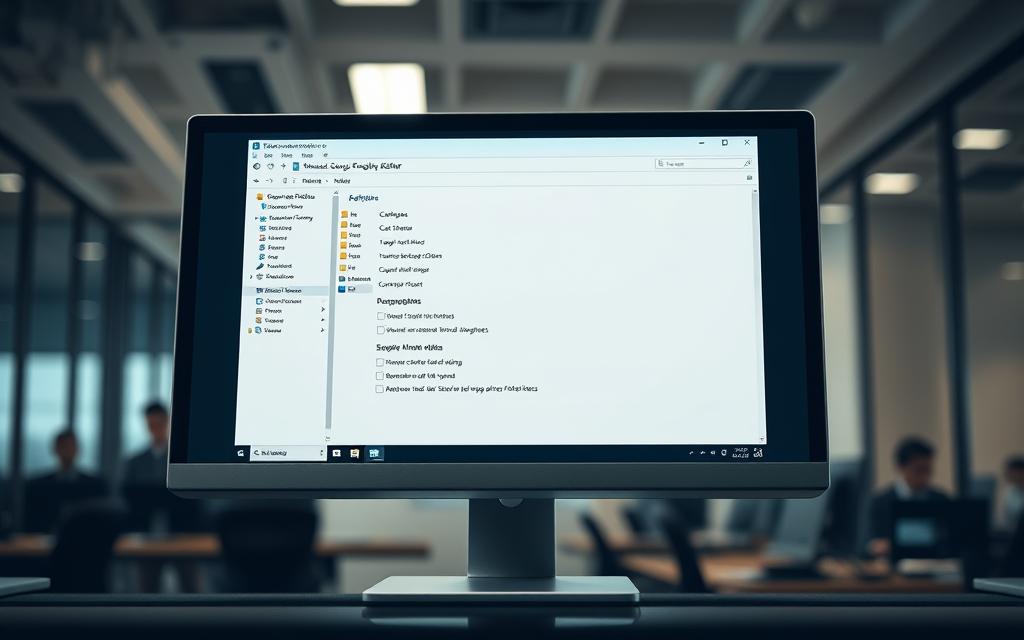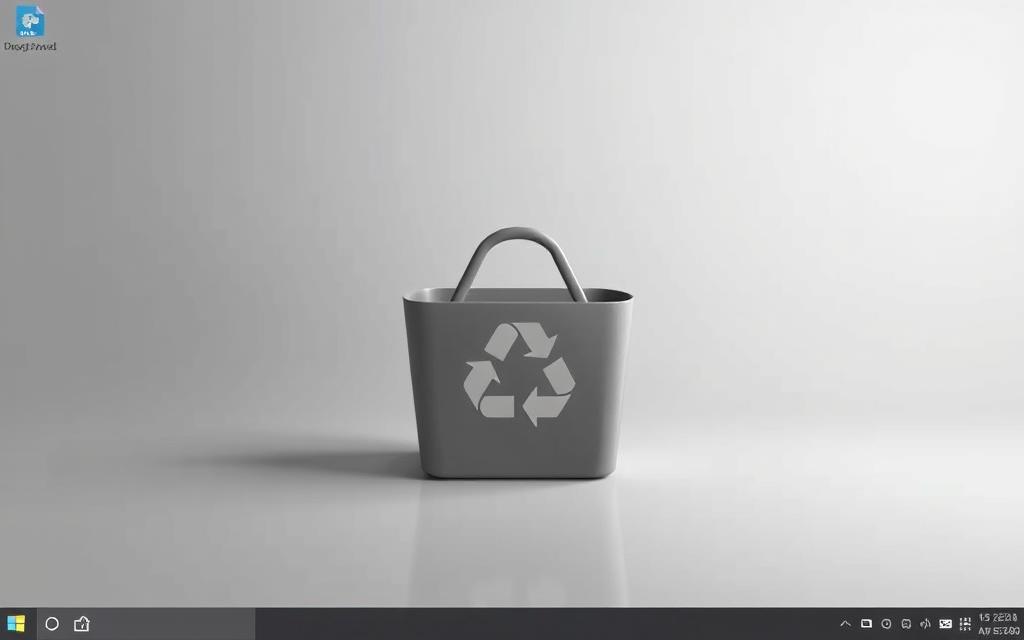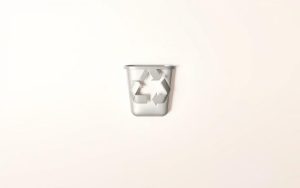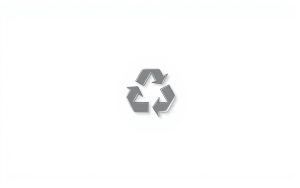Table of Contents
Many users prefer a clean and organized desktop interface. Clutter-free screens enhance productivity and create a more pleasant workspace. One common element that often stands out is the Recycle Bin icon.
The Recycle Bin plays a vital role in managing deleted files, acting as a safety net for accidental deletions. However, some users may wish to hide or remove it for aesthetic reasons or to minimize distractions.
There are three primary methods to achieve this: using Settings, Registry Editor, or Group Policy Editor. These solutions are compatible with various Windows versions, including 11, 10, 8, and 7.
It’s essential to understand the difference between temporary and permanent removal. Always take precautions before making system changes to avoid unintended consequences. If files are accidentally deleted, data recovery tools can help restore them.
Introduction
Customizing your desktop layout is a popular way to enhance user experience. One of the most common desktop icons is the Recycle Bin, which serves as temporary storage for deleted files. While it acts as a safety net for accidental deletions, some users prefer to hide it for aesthetic or organizational reasons.
According to recent studies, over 60% of Windows users customize their desktops to improve productivity. A clean workspace minimizes distractions and creates a more pleasant environment. However, removing the Recycle Bin raises concerns about losing access to deleted files permanently.
It’s important to note that the Recycle Bin cannot be permanently deleted from your computer. Microsoft’s default configuration ensures it remains a core part of the system. Instead, users can hide or disable the icon temporarily.
“A clutter-free desktop isn’t just about looks—it’s about creating a workspace that works for you.”
Before making any changes, consider the potential risks. Accidental deletions can still occur, and knowing how to recover files is essential. Data recovery tools are widely available and can help restore lost information if needed.
| Reason for Removal | Considerations |
|---|---|
| Aesthetic Appeal | Hiding icons creates a cleaner look. |
| Improved Focus | Fewer distractions enhance productivity. |
| Accidental Deletion | Files can still be recovered if needed. |
In summary, the Recycle Bin is a valuable tool, but its visibility on the desktop is optional. Whether you prioritize aesthetics or functionality, understanding the process and its implications is key.
How to Remove the Recycle Bin from Desktop in Settings
Streamlining your workspace can significantly boost efficiency and focus. One way to achieve this is by customizing your desktop icon settings. This process allows you to hide or display specific icons, including the Recycle Bin, based on your preferences.
![]()
Windows provides a straightforward method to adjust these settings. You can use either the Settings app or the right-click context menu. Both options are quick and require no technical expertise.
Step 1: Open Personalization Settings
Begin by pressing Win + I to open the Settings app. Alternatively, right-click on your desktop and select Personalize from the context menu. This will take you to the Personalization section, where you can modify various themes and icons.
Step 2: Access Desktop Icon Settings
Navigate to the Themes tab within the Personalization menu. Scroll down and click on Desktop Icon Settings. This will open a new window where you can manage the visibility of icons like Computer, Network, and the Recycle Bin.
Step 3: Uncheck the Recycle Bin Option
In the Desktop Icon Settings window, locate the box next to the Recycle Bin option. Uncheck it to hide the icon from your desktop. Click Apply and then OK to save your changes. The icon will disappear immediately without requiring a system restart.
“Customizing your desktop is about creating a workspace that aligns with your needs and preferences.”
If you ever want to restore the icon, simply revisit the Desktop Icon Settings and check the box next to the Recycle Bin option. This flexibility ensures you can adapt your workspace as needed.
| Feature | Benefit |
|---|---|
| Keyboard Shortcuts | Quick access to settings for faster customization. |
| Right-Click Menu | Alternative method for users who prefer mouse navigation. |
| Immediate Application | Changes take effect without restarting your computer. |
By following these steps, you can create a cleaner, more organized desktop tailored to your workflow. Remember, these changes are reversible, so you can always adjust your settings as your needs evolve.
Remove the Recycle Bin from Desktop Using Registry Editor
For advanced users, the Registry Editor offers a powerful way to customize the desktop. This tool allows precise control over system settings, enabling you to hide or modify icons like the Recycle Bin. However, editing the registry requires caution, as incorrect changes can affect system stability.
Step 1: Open Registry Editor
Press Win + R to open the Run dialog box. Type regedit and press Enter. This will launch the Registry Editor, where you can navigate through system keys.
Step 2: Locate the Recycle Bin Key
Navigate to the following path: HKEY_LOCAL_MACHINE\SOFTWARE\Microsoft\Windows\CurrentVersion\Explorer\Desktop\NameSpace. Look for the key with the GUID 645FF040-5081-101B-9F08-00AA002F954E, which corresponds to the Recycle Bin.
Step 3: Delete the Recycle Bin Key
Right-click the key and select Delete. Before proceeding, it’s recommended to export a backup of the registry by clicking File > Export. This ensures you can restore the settings if needed.
Step 4: Restart Your Computer
After deleting the key, restart your computer for the changes to take effect. The Recycle Bin icon will no longer appear on the desktop. Remember, this method permanently hides the icon, so proceed with caution.
“Editing the registry is like performing surgery on your system—precision and care are essential.”
| Step | Action |
|---|---|
| 1 | Open Registry Editor via Run dialog. |
| 2 | Navigate to the specified registry path. |
| 3 | Delete the Recycle Bin key. |
| 4 | Restart your computer. |
This method is ideal for users who want a permanent solution. However, always back up your registry before making changes to avoid unintended consequences.
Hide the Recycle Bin from Desktop with Local Group Policy Editor
Optimizing your desktop experience often involves fine-tuning system settings. For users running Windows Pro or Enterprise editions, the Local Group Policy Editor provides a robust solution. This tool allows you to manage policies that control desktop behavior, including the visibility of the Recycle Bin.

Using the Local Group Policy Editor, you can enforce changes across your system or network. This method is particularly useful for administrators managing multiple devices. Unlike other methods, it offers a centralized approach to customization.
Step 1: Open Local Group Policy Editor
Press Win + R to open the Run dialog box. Type gpedit.msc and press Enter. This launches the Local Group Policy Editor, where you can configure various settings.
Step 2: Navigate to Desktop Settings
In the editor, go to User Configuration > Administrative Templates > Desktop. This section contains policies related to desktop icons and behavior.
Step 3: Enable the Remove Recycle Bin Icon Policy
Locate the policy named Remove Recycle Bin icon from desktop. Double-click it, set the option to Enabled, and click Apply. This action hides the icon immediately.
Step 4: Restart Your Computer
For the changes to take full effect, restart your computer. Once rebooted, the Recycle Bin icon will no longer appear on the desktop.
“The Local Group Policy Editor is a powerful tool for system administrators, offering granular control over desktop settings.”
This method is ideal for users who need a persistent solution across multiple devices. However, it’s exclusive to Windows Pro and Enterprise editions. For other versions, consider alternative methods like the Registry Editor.
| Feature | Benefit |
|---|---|
| Centralized Control | Manage settings across multiple devices. |
| Persistent Changes | Settings remain active until manually reversed. |
| Network Administration | Ideal for IT professionals managing large setups. |
By leveraging the Local Group Policy Editor, you can create a cleaner, more organized desktop tailored to your needs. Always ensure you understand the implications of policy changes before applying them.
How to Access the Recycle Bin After Removal
Accessing the Recycle Bin after removal is straightforward with the right tools. Even if the icon is hidden, deleted files remain accessible through alternative methods. These include using the file explorer, search bar, or special commands.

One effective method is using the special shell command: ::{645FF040-5081-101B-9F08-00AA002F954E}. Simply enter this command into the file explorer address bar to open the Recycle Bin directly. This bypasses the need for a visible desktop icon.
Another option is the search bar in the Start menu. Typing “Recycle Bin” will display it in the search results, allowing quick access. This method is ideal for users who prefer simplicity.
For those comfortable with navigation, the file explorer provides a direct path. Open file explorer, navigate to the C drive, and locate the Recycle Bin folder. This ensures you can retrieve deleted files without restoring the desktop icon.
“Understanding these methods ensures you can always retrieve important files, even if the icon is hidden.”
When using special commands, verify the syntax to avoid errors. Incorrect entries may prevent access to the Recycle Bin. For more detailed guidance, visit this resource on access Recycle Bin.
Whether you prefer commands, search functions, or manual navigation, these methods ensure you can always manage deleted files. Temporary or permanent removal of the icon doesn’t limit your ability to recover important data.
Conclusion
Customizing your desktop can improve productivity and aesthetics. Whether you use Settings, Registry Editor, or Group Policy Editor, these methods work across all Windows versions. Always ensure data protection before making changes.
If files are permanently deleted, tools like EaseUS Data Recovery Wizard can help. It supports NTFS, FAT32, and EXT file systems, with a 99.7% recovery rate. Its three-step process simplifies restoring lost data.
For long-term system maintenance, consider professional recovery tools. Enterprise users may benefit from advanced features, while home users can rely on simpler solutions. Tailor your workspace to suit your needs while safeguarding important files.
FAQ
Can I restore the Recycle Bin icon after removing it?
Yes, you can restore the icon by revisiting Desktop Icon Settings in the Personalization menu and rechecking the Recycle Bin option.
Will deleting the Recycle Bin from the desktop erase my files?
No, removing the icon does not delete any files. You can still access deleted items through File Explorer or by restoring the icon.
Is it safe to use the Registry Editor to remove the Recycle Bin?
While the Registry Editor is a powerful tool, proceed with caution. Incorrect changes can affect system stability. Always back up the registry before making modifications.
How do I access the Recycle Bin if it’s hidden from the desktop?
You can open it via File Explorer or by typing “Recycle Bin” in the Start Menu search bar.
Can I hide the Recycle Bin without removing it permanently?
Yes, using the Local Group Policy Editor or Desktop Icon Settings allows you to hide the icon without deleting it entirely.
What happens if I delete the Recycle Bin key in the Registry Editor?
Deleting the key removes the icon from the desktop. However, the Recycle Bin functionality remains intact, and you can restore the icon later if needed.









